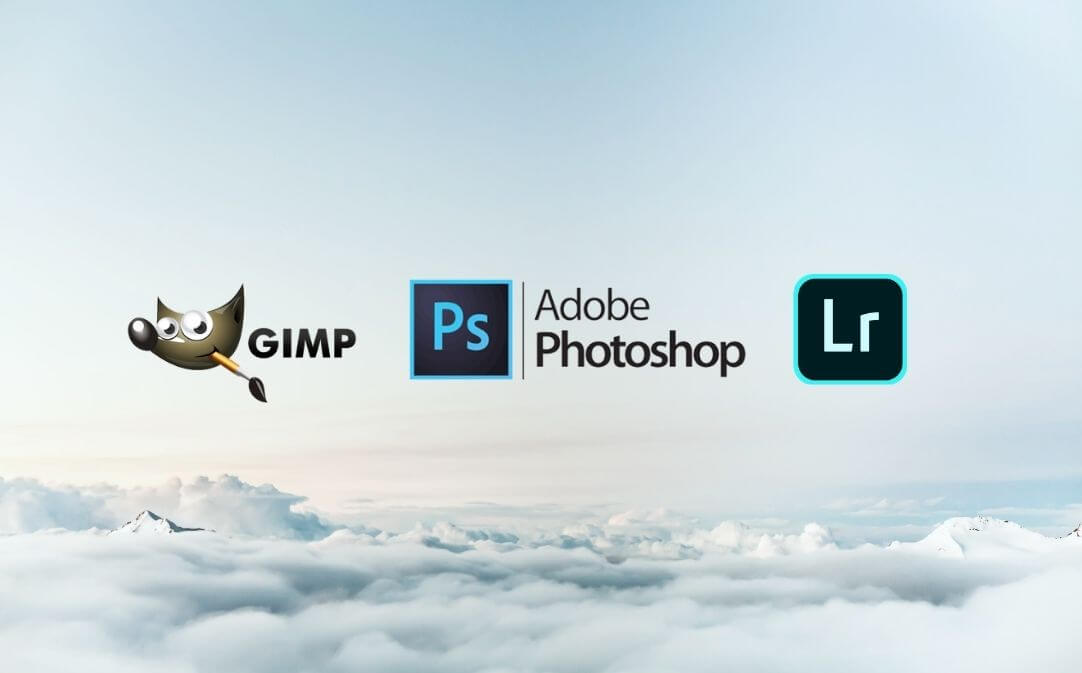In order to editing photos and high-quality images, 3 software are always remarkable for their outstanding performance. Photoshop, Gimp, and Lightroom. People are using this software for a long time. But have you ever thought of comparing these 3 apps? So today we will explain in detail about Gimp vs Photoshop vs Lightroom so that you can understand what is the best choice for you.
Table of Contents
Gimp versus Photoshop versus Lightroom
There are five fundamental contrasts between Gimp, Photoshop, and Lightroom
- Gimp is free to use while Photoshop and Lightroom have a premium plan.
- If you subscribe to the Adobe Photography plan, you will get Photoshop as well as Lightroom at a single price.
- Photoshop is widely preferred by the design community. It has add-ons, beautiful templates, lots of third-party tools, amazing effects, and more. These things have strengthened their functionality.
- Gimp supports PSD files yet some can get mutilated when bringing in layers.
- You can’t use Photoshop & lightroom in the Linux operating system.
1. Gimp

Gimp is an free and open source raster graphics editor. The image manipulation program app was mainly designed for Linux users.
Since Photoshop wasn’t accessible on Linux, that is the reason Gimp was the main photo editor for Linux operating systems. Before long, even the Windows users began to utilize the application. At that point, the application came out with a macOS form too.
Gimp works and feels like Photoshop. It has practically all the principal tools and some Photoshop features with similar functions. The best feature of Gimp is that the application is lightweight. The base application itself is just about a 200mb download. You will get non destructive editing features using GIMP 3.2. Professional photographers use GIMP for basic photo editing of raw file.
Main features of Gimp
- Excellent photo manipulation options
- Tools for photograph correcting and improving
- Clean and adaptable UI
- Supports third-party plugins
- Instructional exercises for beginners
- open source
Pros:
- Support PSD files
- Make your own interface
- Over 100 plugins
- Consumes low resources
- Work with animations
- Free of charge
Cons:
- Poor-quality tools
- Slow development
2. Photoshop

It’s been over a long time since Photoshop was first introduced. The app made considerable progress and established itself as a powerful photo editing as well as photo manipulation software. It’s currently being utilized for everything from basic photos to big business level work.
There are various reasons why Photoshop is becoming so popular among designers to perform their graphic design work. No photo editing software has ever approached the smooth usefulness and the serious highlights that Photoshop offers.
The strong loyal community which is the best reason to choose Photoshop. Because of this network, there’s no deficiency of layouts, additional items, impacts, activities, and presets for Photoshop. So it is a great software where you can explore something new. Photoshop also connects seamlessly with the other Adobe creative cloud applications, allowing the user to jump around different software to create a finished piece without leaving the Adobe family. Photoshop is the best option for photo retouching.
Main Features Of Photoshop
- Smooth and adjustable UI
- Unmatched photo editing experience
- High-quality tools
- Great functionality
- Both Premium and free 3rd party plugins
- Supports for templates
- Third-party add-ons
- Supports all type of file formats
Pros:
- Design beautiful artworks
- Free cloud storage
- Beginner-friendly UI
- Development of new technologies
- Amazing features
- Simple tools
Cons:
- High system resource consumption
- Too expensive
3. Lightroom

Adobe Lightroom was first introduced in 2007 by Adobe Photoshop. The image editing software was mainly used to organize photos and small adjustments. Then It was later improved for doing other works. This app is not designed to do advanced photo editing and manipulation works. The photographers and designers use this software to make some quick edit and adjustments so that they can improve their workflow.
If you compare gimp vs lightroom, adobe lightroom doesn’t give any great tools to edit photos. The software makes photo optimization a lot less difficult and simpler. It’s particularly helpful for designers who work with wedding collections and photoshoots. As adobe lightroom permits you to rapidly upgrade clusters of photographs without any problem.
Main features of Lightroom:
- Better and stunning photograph organization
- AI-powered facial detection
- Supports RAW files
- Live-preview of the optimized photos
- Free cloud storage
Pros:
- Easily organize photos
- Third-party add-ons
- Cloud storage
- Easy to use filters
- Great photo enhancement
- Low price
Cons:
- Not supported on older Windows
- Limited functions
Final Words
In the end, we will suggest you select the one which is suitable for you. Because we have covered almost all the important features and compared Gimp-Photoshop-Lightroom. Now you have got a clear understanding and you can easily make a differentiation.
